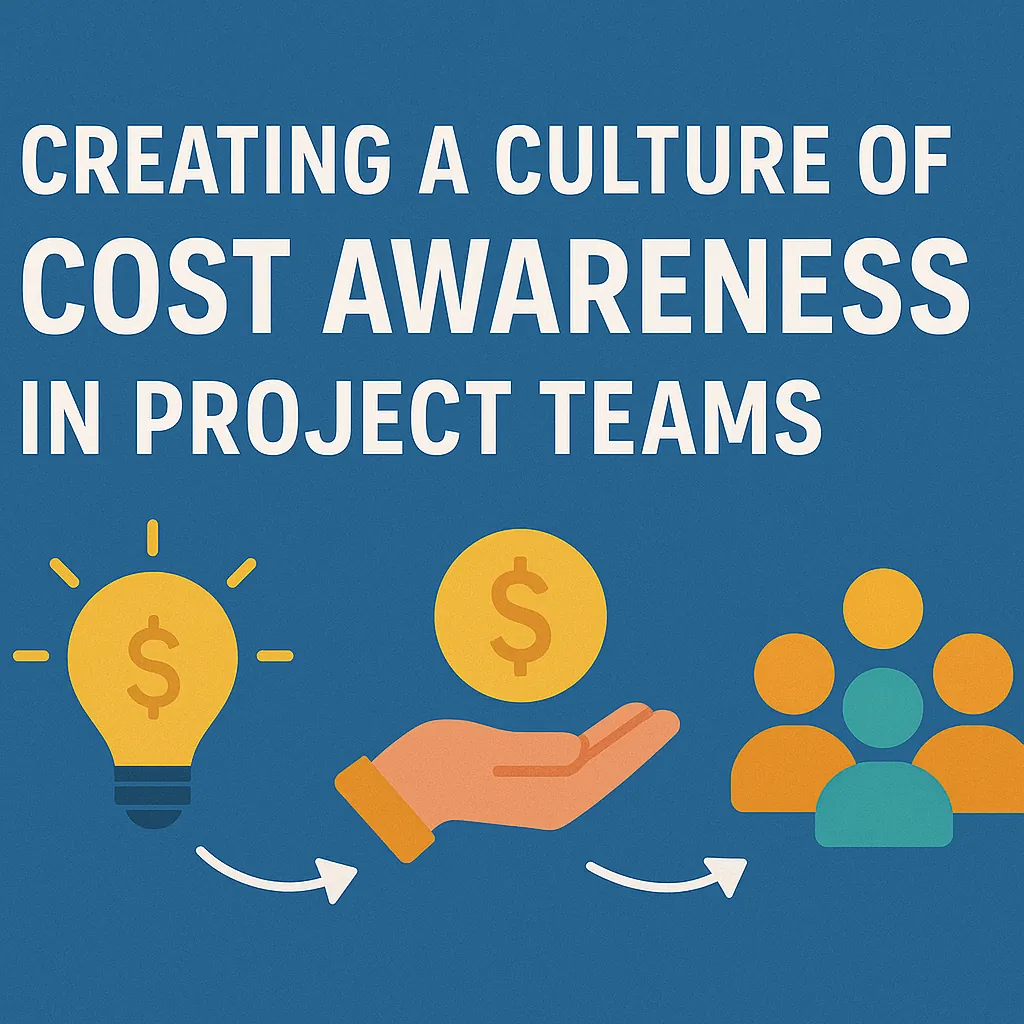Introduction
Understanding and managing costs is crucial for the success of any project. One of the key concepts that project managers and team leaders must grasp is the notion of ‘actual cost.’ This term refers to the total expenses incurred during the execution of a project, encompassing direct costs such as labor and materials, as well as indirect costs like overhead and administrative expenses. By accurately tracking actual costs, project managers can assess financial performance, make informed decisions, and ensure that projects remain within budget.
Cost awareness is not merely a financial metric; it is a mindset that permeates the entire project team. When team members are cognizant of the costs associated with their tasks and decisions, they are more likely to prioritize efficiency and resourcefulness. This awareness can lead to significant benefits, including reduced waste, improved resource allocation, and enhanced overall project performance. In fact, fostering a culture of cost awareness can be a decisive factor in achieving project objectives and delivering value to stakeholders.
The objective of this blog is to equip team leaders and project managers with effective strategies for cultivating a cost-conscious mindset among project team members. By implementing these strategies, organizations can create an environment where cost management is prioritized, ultimately leading to more successful project outcomes. Through this exploration, we aim to highlight the importance of integrating cost awareness into the fabric of project management practices, ensuring that every team member understands their role in maintaining financial health throughout the project lifecycle.
Understanding Actual Cost in Project Management
Actual cost (AC) refers to the total expenses incurred for project activities during a specific time period. This metric is essential for evaluating project performance and making informed financial decisions.
Definition of Actual Cost
- Actual Cost (AC): This is the sum of all expenses that have been incurred for project activities. It can represent either the full costs of a project or a portion of those costs, depending on whether the analysis is conducted during execution or after project completion [7].
- Estimated Cost: This is the projected cost of completing project tasks, often determined at the project’s outset. It serves as a baseline for comparison against actual costs.
- Budgeted Cost: This refers to the approved cost for the project, which includes both estimated costs and any contingencies. It is the financial plan that guides project spending.
Understanding these distinctions is vital for project teams, as it allows them to track financial performance accurately and make necessary adjustments throughout the project lifecycle.
Impact of Actual Cost on Project Financial Health
The actual cost is a key metric that directly influences the financial health of a project. By comparing actual costs to estimated and budgeted costs, project managers can:
- Evaluate Performance: The cost baseline enables project managers to assess whether the project is on track financially. This comparison helps identify variances that may require corrective actions [3].
- Informed Decision-Making: Actual cost data provides insights into spending patterns, allowing project leaders to make informed decisions regarding resource allocation and budget adjustments. This is crucial for maintaining project viability and ensuring that financial goals are met [6][9].
Common Causes of Cost Overruns
Understanding the common causes of cost overruns is essential for project teams aiming to cultivate a cost-conscious mindset. Some prevalent factors include:
- Scope Creep: Uncontrolled changes or continuous growth in project scope can lead to increased costs. Teams must manage scope effectively to prevent budget overruns.
- Inaccurate Estimates: If initial cost estimates are not based on realistic assessments, projects may face significant financial challenges as actual costs exceed expectations [8].
- Resource Mismanagement: Inefficient use of resources, whether human or material, can lead to unnecessary expenses. Teams should focus on optimizing resource allocation to mitigate this risk.
The implications of cost overruns can be severe, leading to project delays, reduced profitability, and strained stakeholder relationships. By understanding actual costs and their impact, project teams can develop strategies to minimize these risks and foster a culture of financial responsibility.
The Importance of a Cost-Conscious Mindset
Fostering a culture of cost awareness within project teams is essential for enhancing overall project success and organizational efficiency. A cost-conscious mindset not only benefits individual projects but also contributes to the long-term sustainability of the organization. Here are some key points highlighting the importance of this mindset:
- Better Resource Allocation: A cost-aware culture encourages team members to prioritize the efficient and effective use of resources. When employees understand the financial implications of their decisions, they are more likely to allocate resources judiciously, minimizing waste and unnecessary expenses. This leads to optimized project outcomes and ensures that every dollar spent contributes to the project’s goals [1][4].
- Enhanced Project Accountability: Cost consciousness fosters a sense of ownership among team members regarding project expenditures. When individuals are aware of the costs associated with their actions, they are more likely to take responsibility for their decisions and their impact on the project’s budget. This heightened accountability can lead to improved performance and a stronger commitment to achieving project objectives [3][12].
Long-Term Organizational Benefits: Cultivating a cost-aware culture has several long-term advantages for organizations. It can lead to:
- Sustainable Cost Structures: By embedding cost consciousness into the organizational culture, companies can develop sustainable cost structures that support long-term growth and stability [7][8].
- Increased Employee Engagement: When employees are engaged in cost management, they feel more connected to the organization’s goals, which can enhance morale and productivity [3][4].
- Strategic Advantage: Organizations that prioritize cost awareness can respond more effectively to market changes and economic pressures, positioning themselves as leaders in their industry [8][9].
Strategies for Fostering Cost Awareness
Creating a culture of cost awareness within project teams is essential for effective project management. Here are actionable strategies that team leaders and project managers can implement to instill a cost-conscious mindset among their team members:
1. Education and Training
- Implement Training Sessions: Organize regular training sessions focused on budget management and cost analysis. This equips team members with the necessary skills to understand and manage project finances effectively.
- Encourage Financial Understanding: Foster an environment where team members are encouraged to grasp the financial aspects of their roles. This understanding can lead to more informed decision-making and resource allocation, ultimately benefiting the project’s financial health [2][10].
2. Transparent Communication
- Promote Open Discussions: Create a culture of transparency by encouraging open discussions about the budget status and any cost-related challenges. This helps in identifying potential issues early and fosters a collaborative approach to problem-solving.
- Use Collaborative Platforms: Leverage collaborative tools to share financial reports and updates. This ensures that all team members are informed about the project’s financial standing and can contribute to cost-saving initiatives [3][10].
3. Setting Clear Budget Expectations
- Define Budget Constraints: Clearly outline budget constraints and expectations from the outset of the project. This clarity helps team members understand the financial limits within which they must operate.
- Incorporate Budget Milestones: Integrate budget milestones into the project planning process. This allows for regular assessments of financial performance against the budget, ensuring that the team remains focused on cost management throughout the project lifecycle [4][10].
4. Incentivizing Cost-Saving Behaviors
- Create Reward Systems: Develop reward systems for teams that successfully meet or come under budget. Recognizing and rewarding cost-saving behaviors can motivate team members to prioritize financial efficiency.
- Celebrate Cost-Saving Initiatives: Acknowledge and celebrate individual and team efforts in implementing cost-saving measures. This recognition reinforces the importance of cost awareness and encourages ongoing commitment to financial prudence [10][14].
5. Regular Monitoring and Reporting
- Establish Routine Tracking: Set up a routine for tracking actual costs versus budgeted costs. Regular monitoring allows for timely adjustments and helps prevent cost overruns.
- Utilize Project Management Tools: Implement project management tools that facilitate real-time cost monitoring. These tools can provide valuable insights into spending patterns and help teams make informed decisions to stay within budget [5][8][15].
By adopting these strategies, project leaders can cultivate a culture of cost awareness that not only enhances project outcomes but also contributes to the overall financial health of the organization.
Challenges in Creating a Cost-Conscious Culture
Fostering a culture of cost awareness within project teams is essential for effective project management. However, several challenges can impede this process. Understanding these hurdles and implementing strategies to overcome them is crucial for team leaders and project managers aiming to instill a cost-conscious mindset among their members.
Common Challenges
- Resistance to Change: Team members may be accustomed to existing practices and may resist new cost management initiatives. This resistance can stem from a fear of the unknown or a belief that changes may complicate their work processes [5].
- Lack of Training: Without proper training, team members may not fully understand the principles of cost management or the importance of a cost-conscious culture. This knowledge gap can lead to ineffective implementation of cost-saving measures [5].
- Communication Barriers: A cost-conscious culture cannot be imposed from the top down; it requires shared understanding and communication among all team members. Misalignment in communication can hinder the adoption of cost-conscious practices [13].
- Inadequate Leadership Support: Leadership commitment is vital for fostering a cost-conscious culture. If leaders do not prioritize cost awareness, team members may perceive it as a low priority, leading to a lack of engagement in cost management initiatives [7].
Importance of Leadership Commitment
Leadership plays a pivotal role in establishing a cost-conscious culture. When leaders actively demonstrate their commitment to cost management, it sets a precedent for the entire team. This commitment can manifest in various ways, such as:
- Modeling Cost-Conscious Behavior: Leaders should exemplify cost-saving practices in their decision-making processes, encouraging team members to follow suit [3].
- Providing Resources and Training: Investing in training programs and resources can equip team members with the necessary skills to understand and implement cost management strategies effectively [5].
Methods to Overcome Challenges
- Continuous Feedback Loops: Establishing regular feedback mechanisms can help identify areas of resistance and misunderstanding. This approach allows for timely adjustments to strategies and fosters an environment of open communication [9].
- Incentivizing Cost-Conscious Behavior: Implementing incentive programs that reward team members for identifying cost-saving opportunities can motivate individuals to engage actively in cost management efforts [7].
- Creating a Shared Vision: Developing a clear and compelling vision for cost management that aligns with the team’s goals can help unify team members around the importance of cost awareness. This vision should be communicated consistently to reinforce its significance [13].
- Encouraging Collaboration: Promoting collaboration among team members can facilitate knowledge sharing and collective problem-solving regarding cost management. This collaborative approach can help break down silos and foster a sense of ownership over cost-conscious practices [6].
By acknowledging these challenges and implementing targeted strategies, project managers and team leaders can cultivate a culture of cost awareness that not only enhances project performance but also contributes to the long-term success of the organization.
Conclusion
Fostering a culture of cost awareness within project teams is not merely a financial strategy; it is a fundamental aspect of effective project management that can significantly enhance overall project success. By instilling a cost-conscious mindset among team members, organizations can optimize resource utilization, minimize waste, and ensure that every decision made contributes positively to the project’s financial health.
Key strategies for cultivating this culture include:
- Clear Communication: Leaders must articulate the vision and rationale behind cost management, ensuring that team members understand its importance and their role in achieving cost efficiency [2][10].
- Empowerment and Ownership: Encouraging team members to take ownership of their contributions to cost management fosters a sense of responsibility and collaboration, which is essential for a sustainable cost-conscious culture [4][7].
- Training and Development: Integrating financial awareness into team operations and providing training on cost management practices can equip team members with the necessary skills to make informed decisions [11][15].
By taking actionable steps towards implementing these strategies, project leaders can create an environment where cost awareness is prioritized. This proactive approach not only enhances the immediate financial performance of projects but also contributes to the long-term sustainability and success of the organization. Improved cost management leads to better resource allocation, reduced risk of cost overruns, and ultimately, a stronger competitive position in the market [9][14].
In conclusion, the journey towards a cost-conscious culture is ongoing and requires commitment from all levels of the organization. However, the long-term benefits—ranging from enhanced project outcomes to a more engaged and responsible team—make it a worthwhile endeavor for any project manager or team leader.
Find out more about Shaun Stoltz https://www.shaunstoltz.com/about/.
This post was written by an AI and reviewed/edited by a human.



